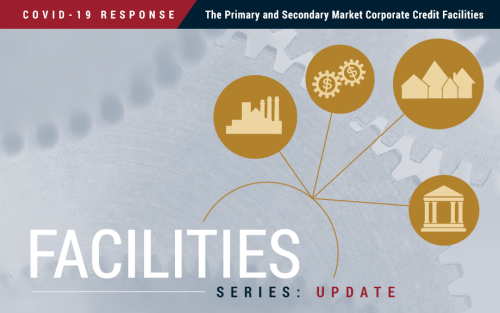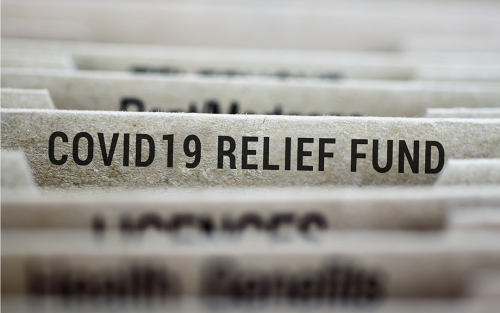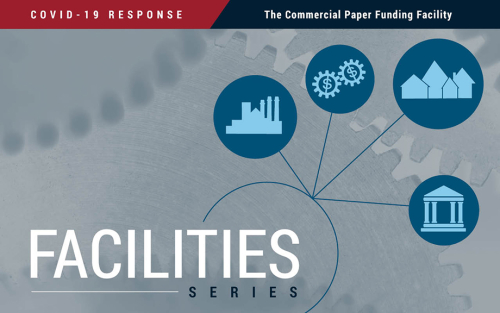The Impact of the Corporate Credit Facilities

American companies have raised almost $1 trillion in the U.S. corporate bond market since March. Based on Compustat data, these companies employ more than 16 million people, and have spent more than $280 billion on capital expenditures in the first half of 2020, thereby supporting future economic activity. In this post, we document the contribution of the Primary Market and Secondary Market Corporate Credit Facilities (PMCCF and SMCCF) to bond market functioning, summarizing a detailed evaluation described in a new working paper. Improvements documented in an earlier blog post on the corporate facilities continued after the initial announcement as purchases began, and can be attributed both to the positive effects of Federal Reserve interventions generally as well as the facilities’ direct impact on eligible issuers in particular.
The Official Sector’s Response to the Coronavirus Pandemic and Moral Hazard

Any time the Federal Reserve or the official sector more broadly provides support to the economy during a crisis, the intervention raises concerns related to moral hazard. Moral hazard can occur when market participants do not bear the negative consequences of the risks they take. This lack of consequences can encourage even greater risks, due to the expectation of future government help. In this post, we consider the potential for moral hazard stemming from the Fed’s response to the coronavirus pandemic and explain why moral hazard concerns were likely more severe in 2008.
Market Failures and Official Sector Interventions

In the United States and other free market economies, the official sector typically has minimal involvement in market activities absent a clear rationale to justify intervention, such as a market failure. In this post, we consider arguments for official sector intervention, focusing on the market failure arising from externalities related to business closures. These externalities are likely to be particularly high for closures arising from pandemic-related economic disruptions. We discuss how the official sector, including institutions such as Congress and the Treasury, can increase social welfare by acting to minimize the fixed costs of business start-up and failure, including the costs associated with unemployment, beyond the level set by private markets alone.
Expanding the Toolkit: Facilities Established to Respond to the COVID‑19 Pandemic

Anna Kovner and Antoine Martin argue that the “credit” and lending facilities established by the Fed in response to the COVID-19 pandemic, while unprecedented, are a natural extension of the central bank’s existing toolkit.
Implications of the COVID‑19 Disruption for Corporate Leverage

The COVID-19 pandemic has caused significant economic disruptions among U.S. corporations. In this post, we study the preliminary impact of these disruptions on the cash flow and leverage of public U.S. corporations using public filings through April 2020. We find that the pandemic had a negative impact on cash flow while also reducing corporations’ interest expenses. However, the cash flow shock far outpaced the benefits of lower interest payments, especially in industries that were disproportionately levered. Looking ahead, we find that a sizable share of U.S. corporations have interest expense greater than cash flow, raising concerns about those corporations’ ability to endure further liquidity shocks.
Municipal Debt Markets and the COVID‑19 Pandemic
In March, with the outbreak of the COVID-19 pandemic in the United States, the market for municipal securities was severely stressed: mutual fund redemptions sparked unprecedented selling of municipal securities, yields increased sharply, and issuance dried up. In this post, we describe the evolution of municipal bond market conditions since the onset of the COVID-19 crisis. We show that conditions in municipal markets have improved significantly, in part a result of the announcement and implementation of several Federal Reserve facilities. Yields have decreased substantially, mutual funds have received significant inflows, and issuance has rebounded. These improvements in municipal market conditions help ensure that state and local governments have better access to funding for critical capital investments.
The Primary and Secondary Market Corporate Credit Facilities

On April 9, the Federal Reserve announced that it would take additional actions to provide up to $2.3 trillion in loans to support the economy in response to the coronavirus pandemic. Among the initiatives are the Primary Market and Secondary Market Corporate Credit Facilities (PMCCF and SMCCF), whose intent is to provide support for large U.S. businesses that typically finance themselves by issuing debt in capital markets. Corporate bonds support the operations of companies with more than 17 million employees based in the United States and these bonds are key assets for retirees and pension funds. If companies are unable to issue corporate bonds, they may be unable to invest in inventory and equipment, meet current liabilities, or pay employees. Maintaining access to credit is thus crucially important during the COVID-19 pandemic, both for issuing companies and for their employees. This post documents the dislocations in the corporate bond market that have motivated the creation of these facilities and explains how we expect these facilities to support U.S. businesses and their employees both through the COVID-related disruptions and beyond, when the economy recovers.
The Commercial Paper Funding Facility

This post documents dislocations in the commercial paper market following the COVID-19 outbreak that motivated the Fed to create the Commercial Paper Funding Facility, and tracks the subsequent improvement in market conditions.
How Does Supervision Affect Bank Performance during Downturns?

New research finds that there is a cyclical nature to the benefits of bank supervisory attention: in normal times, the benefits are smaller, but during downturns the more closely supervised banks exhibit better loan performance and lower earnings volatility.
At the New York Fed: Fourteenth Annual Joint Conference with NYU‑Stern on Financial Intermediation

Blickle, Kovner, and Viswanathan share a synopsis of a recent conference featuring new research in financial intermediation and expert perspectives on corporate credit markets.










 RSS Feed
RSS Feed Follow Liberty Street Economics
Follow Liberty Street Economics